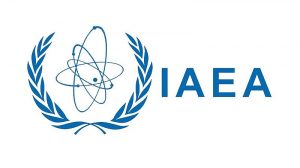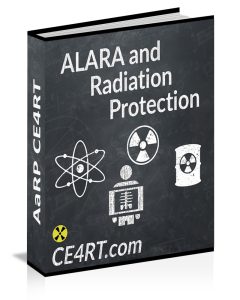Radiation Safety for Healthcare Workers

It is estimated that approximately 1 million people employed in health facilities around the world are exposed to radiation in the course of their work duties. This makes the radiation safety of healthcare workers an important consideration. The International Labor Organization regards any exposure to ionizing radiation received at the workplace as occupational exposure. A healthcare worker’s total radiation exposure also includes natural background exposure received during working hours. However, since the latter is a consequence of living on Planet Earth and occurs regardless of occupation, it is not the responsibility of the employer and is not subject to regulatory controls.
Occupational Radiation Exposure: Who is at Greatest Risk?
As mentioned, healthcare workers are the largest group of people occupationally exposed to artificial sources of ionizing radiation. Radiologic technologists work with radiation to acquire medical images. This puts them at potential danger of suffering the detrimental effects of ionizing radiation. Radiation is thus an occupational health hazard and technologists must be aware of the damage it can cause. In addition to the risk of cancer, studies have shown that workers exposed to radiation are more susceptible to cataract formation in the eyes compared to hospital workers who do not use radiation. In 2011, based on new findings, the ICRP lowered the safe limit of absorbed dose to the eye by tenfold, from 5 Gy to 0.5 Gy in an effort to promote the radiation safety of healthcare workers.
Effects of Radiation on Human Tissue
Radiation helps save human lives, but it can also harm the human body by its ionizing effect on atoms. An atom is the smallest component of any element and consist of a nucleus (positive charge) in the center and electrons (negative charge) in orbit around it. When X-rays collide with human tissue, the energy knocks the atom’s electrons out of orbit. This process is called ionization and it leaves the atom in an unstable state, creating what is known as a radical. These unsteady radicals are highly reactive and can ionize water molecules, disrupt DNA strands, cause cell death, and lead to uncontrolled cell replication.
The Importance of Occupational Dose Monitoring
Monitoring exposure with radiation badges is strongly encouraged to recognize when the dose limit is exceeded and there is a need to reduce exposure and safeguard the worker’s health. If individual monitoring is not feasible, radiation exposure should be passively measured with a dosimeter placed near the X-ray source.
Exposure to radiation in the workplace raises some important issues. Pregnant radiation workers are at risk as they can potentially expose the developing baby to ionizing radiation. For this reason, a female worker with a declared pregnancy may need to be assigned alternative work duties to ensure the radiation dose to the fetus does not exceed a safe level. Another issue is the uncertainty in dose estimation of radiation workers. Accurate measurement of individual dose may have legal ramifications if the employer’s compliance with dose limits is under investigation. Proposals have been made to introduce “dose passports” for radiation workers to properly track radiation exposure when they change jobs. Added to this is the need to manage other workplace hazards in parallel with occupational radiation safety.
It is noteworthy that non-radiation workers (for example, secretaries, security officers, and janitorial staff) are protected the same way as members of the public. According to NCRP guidelines, the effective dose to an individual from the general population should not be more than 1 mSv (100 mrem) per annum. This same dose limit applies to healthcare personnel who work near radiation facilities but remain in unrestricted areas. Facility design and architectural shielding afford the same protection to non-radiation workers as the general public.
Occupational Radiation Safety
According to a UNSCEAR report, an estimated 330 medical radiology examinations are performed per 1000 people worldwide each year. Interestingly, in countries with good healthcare infrastructure, such as the United States, the statistics are much higher (about 920 medical radiology examinations are performed per 1000 people each year). Occupational radiation safety is, therefore, particularly important in light of the increasing number of radiological interventions performed in the US and worldwide.

The International Atomic Energy Agency (IAEA) has issued a series of safety standards for the radiation protection of workers. These are categorized as safety fundamentals (basic objectives and principles), safety requirements (minimum requirements that must be met), and safety guidelines (recommended actions). These safety standards are not legally binding but can be adopted by member states along with national regulations. Safety during occupational radiation exposure requires a multi-layered approach and continuous commitment to resources and intent in order to ensure minimum risk to both practitioners and patients.
Equipment and Training for Radiation Protection of Healthcare Workers
Occupational radiation protection and risk reduction in medical facilities is achieved by two key methods – the safe use of radiation-producing equipment and the training of workers who are exposed to radiation. The safe operation of radiation equipment involves device design and manufacturing as well as correct operation. Facility design, shielding, acceptance testing, and quality assurance programs are other aspects of occupational radiation safety. During the operation of the equipment, adequate protection of workers with personal protective devices is vital for radiation safety. Some of the key features of occupational radiation protection are discussed in the following paragraphs.
Radiation safety is a concern for all healthcare workers. A safe and healthy environment requires the commitment and cooperation of every worker in the radiology department. Education, training, and continuing professional development of radiologists, radiology techs, medical physicists, and other professionals is the primary means of achieving the goal of radiation safety. The radiology community must be thoroughly familiar with their duties and responsibilities to ensure radiation protection and compliance with safety regulations.
Computer Training for Radiation Safety
Trainers should assume that technologists have only basic computer skills. There are differences in computer proficiency from generation to generation. Although it could be considered stereotyping, there are differences in the computer skills of younger and older technologists. Research has shown that, not surprisingly, people above the age of 50 are far less likely to be computer savvy than people under the age of 50. Millennials own more cell phones, tablets, e-readers, and laptops than baby boomers.
There is now an equal representation of baby boomers (born in the 1940s and 50s) and millennials (born in the 1980s and 90s) in the demographic distribution of radiologic technologists. Older technologist may lack an understanding of radiation protection in digital radiography while younger technologists may be overly reliant on new digital techniques and lack practical experience. What is needed then is an assessment of skill levels and appropriate training to address any gaps. Further complicating this is the need for technologists to cross-train on multiple modalities.
X-ray Continuing Education
Browse through our e-courses for X-ray technologist CE recognized by the ARRT® and other registries. All courses on our website are valid category A credits which fulfill ARRT® CE requirements. These CEUs are also accepted by NMTCB, ARDMS, SDMS, every US state and territory, Canadian provinces, and all other Radiologic Technologist, Nuclear Medicine, and Ultrasound Technologist registry in North America, for both full and limited permit technologists, guaranteed. Check our site for any ongoing free X-ray CE offers.
